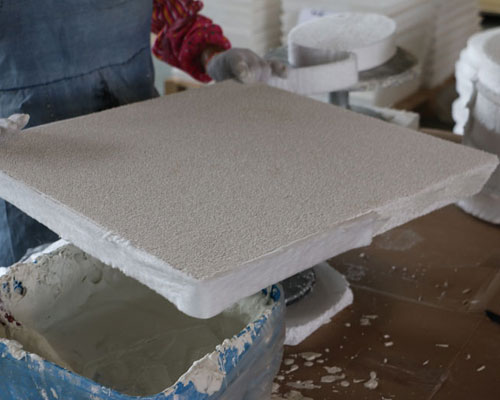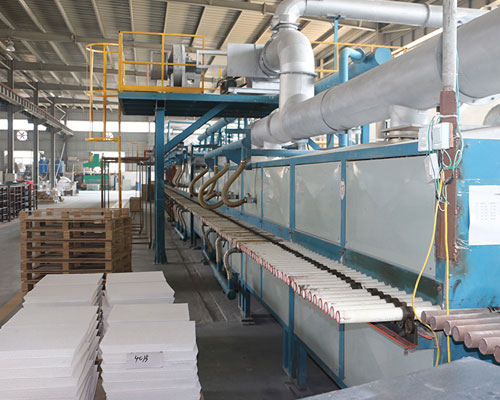The purification of metal liquid plays an important role in improving the mechanical properties of castings. At present, the filtering device used to purify the metal liquid is mainly ceramic foam filters for aluminium casting, which can effectively intercept harmful impurities in the metal liquid and convert the metal liquid from turbulent flow to laminar flow, and completely remove large impurities in the metal liquid. As well as removing fine inclusions from it, improving the structure of the organization, effectively reducing the gas and harmful elements in the metal liquid, and purifying and homogenizing the metal liquid.
Ceramic foam filters for aluminium casting have good high-temperature performance, and can filter aluminum metal liquid without polluting the alloy, and has a good through porosity, so it has good filtration and adsorption. The capacity of oxide inclusions and flux inclusions in the metal solution is obtained. It has good filtering and purification effects, and has excellent strength at high temperatures, thermal shock stability and chemical resistance. At the same time, the ceramic foam filter has a simple manufacturing process and can prepare filter products with larger sizes.
Ceramic Foam Filters For Aluminium Casting Manufacturing Process
Organic foam is an open mesh material to ensure that ceramic slurry can freely pass through and adhere to each other, and then fired to form a porous skeleton.
When the liquid carrier is water, the organic foam will be hydrophilic to be firmly absorbed by the ceramic slurry. Organic foam is usually a polymer sponge prepared by a foaming method. The material of the organic foam can be polyurethane, polyvinyl chloride, polystyrene, latex or cellulose.
Cut the organic foam into blocks of a certain size or other desired shapes. The organic foam can be pre-treated before coating. For example, the organic foam is heated or hydrolyzed to remove the blind film to ensure that the voids are not blocked and thus increase the porosity. After hydrolysis, it is repeatedly rubbed and washed with water, and air-dried for future use.

Generally, before slurry dipping, the organic foam needs to be repeatedly extruded to remove air, and then slurry dipping is performed. The slurry can be impregnated by atmospheric adsorption method, vacuum adsorption method, mechanical rolling method or manual friction method.
Slurry impregnation is roll impregnation. For example, the formulated slurry is applied to the cut polyurethane foam sponge by rolling to form at least one refractory coating.
The slurry impregnation can be performed once, twice or more times. Preferably, the immersion of the slurry is repeated multiple times until the internal air is completely removed. The impregnated organic foam is extruded to remove the excess ceramic slurry to uniformly coat the slurry on the network structure of the foam, and the excess slurry is further extruded to form a green body.
The coated porous green body needs to be dried. Drying can be done in a cool place, by hot air, by infrared or by microwave. The coated material is dried at a higher temperature, such as 100-200°C, to remove all remaining volatiles. The moisture content after drying is controlled within 1%. The sintering temperature is 1000-1600°C. Sintering is carried out at 1300°C in air.

